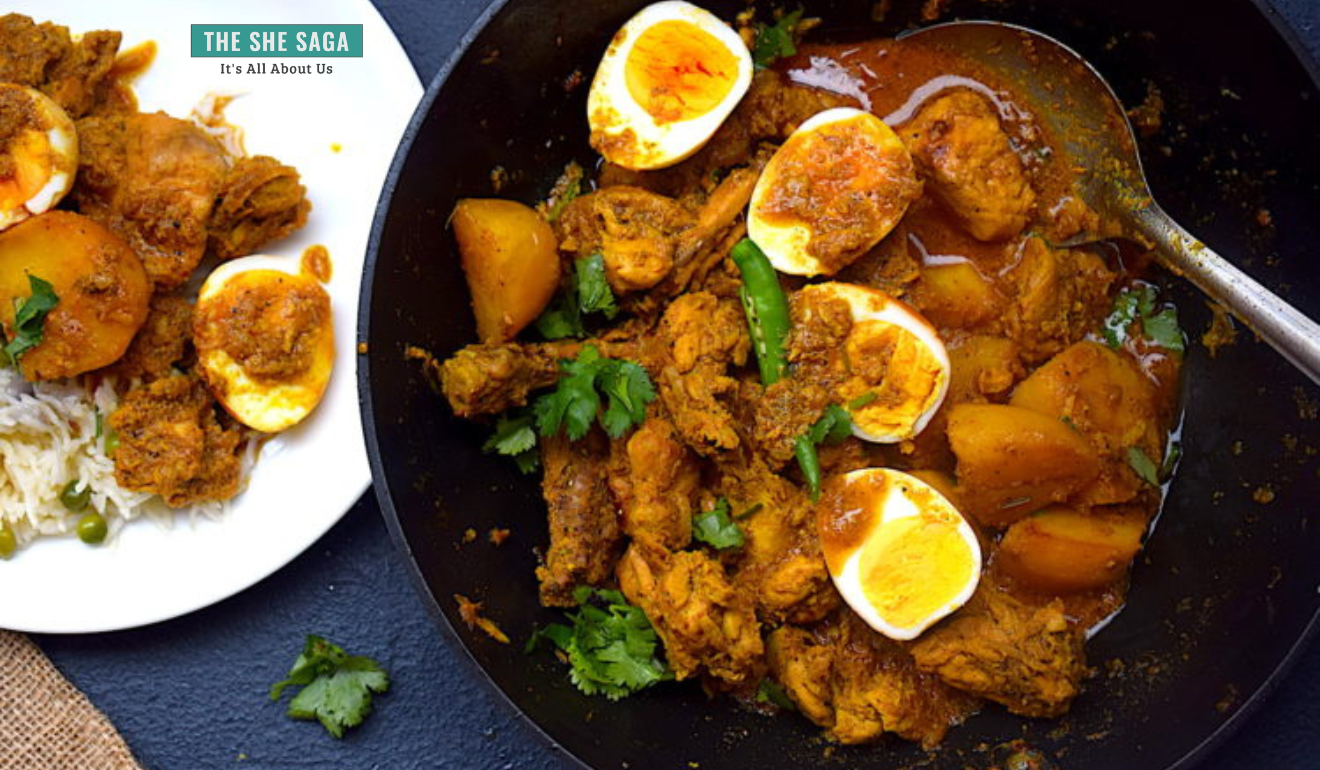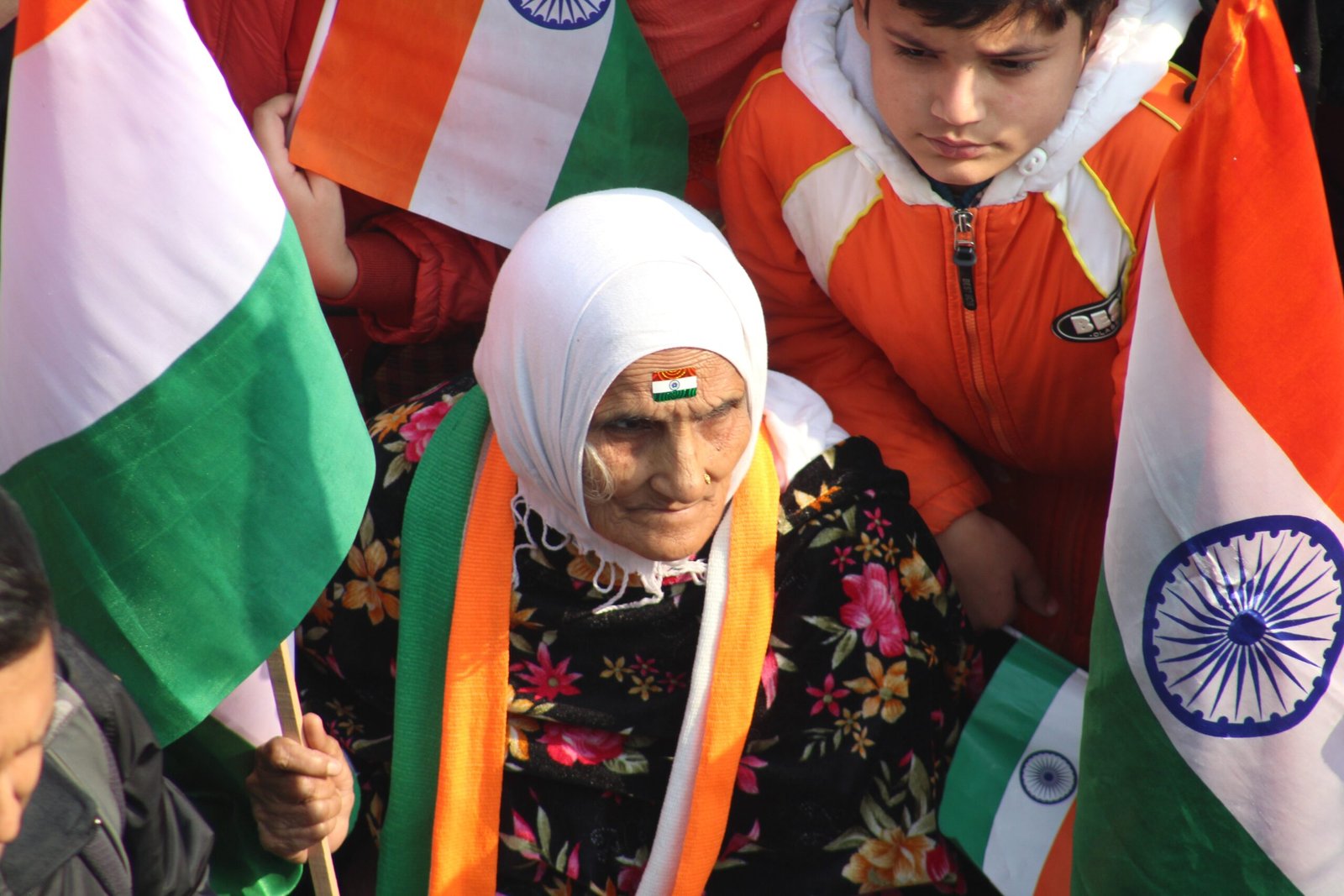One of the most mystifying dishes from eastern India happens to be the Dak Bungalow curry – made from both mutton and chicken. I first got to know about this dish nearly a decade ago while scrolling through my YouTube feed. Needless to say, as a foodie, I was immediately tempted to try it out in my kitchen. It turned out to be pretty lip-smacking!
It is rather interesting as to how this curry got its name. Not many know about its origin and in today’s date and time, the focus is usually on upcoming trends and innovations within the culinary landscape. But, in this post, I will dig into the history of this fascinating dish.
Historical Background Of The Dak Bungalow Curry
During the 19th century, while the British rule in India was at its peak, dak bungalow curry made its appearance. The establishment of the Indian postal system by Robert Clive in 1774 transformed the mode of communication in the country. It went on to have far-reaching consequences across verticals, one of them being the setting up of rest-houses known as Dak Bungalows in the 1800s. This kind of residential space first made its appearance in 1840 and gradually went on to extend from the Himalayas in the north to Nilgiris in the south.
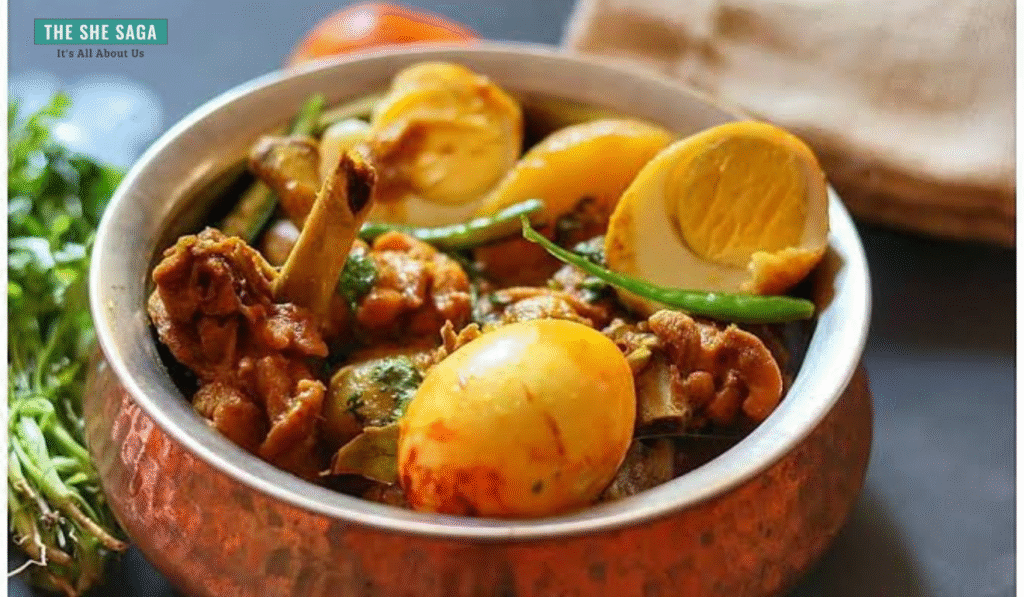
Often referred to as ‘dak bungalows’, these architectures were sprinkled all over with a major concentration in eastern part, given that Kolkata (then Calcutta) was the country’s capital. They provided standardised accommodation to English mail carriers who rode horses and needed to rest. The term ‘dak’ in Bengali and Hindi both means ‘mail.’ The rest-houses, known as ‘bangla’, bungalow or dakbangla, were earmarked for British government officials who were tasked with conserving outposts of East India Company. Further, it is said that these dak bungalows also provided a place for the judges to hold courtroom sessions on the ground floor.
When these dak bungalows were empty, caretakers and postmen were deployed to look after the property. These properties were big enough in size situated amidst wilderness where often, the caretakers kept their own poultry. A khansama or cook also used to be around who would obviously make delectable dishes for the sahibs whenever they arrived. What the cooks usually did was to concoct up a delicacy from whatever limited resources they had in such a scenario. This is how, egg with chicken (in most cases) made its way into this dish. Alternately, on certain rare occasions the dak bungalow curry was also made with mutton, when the sahibs and their guests went for shikar (hunting) into the wild and killed a goat.
Present Day Scenario Of Dak Bungalow Curry
Even today, dak bungalows continue to exist, mostly in dereliction. And it is believed that government officials occasionally use these structures to rest during their travels in the innermost parts of the country. It is uncanny that how many tales of love, murder, ghosts, suicides and tragedies have been and still continue to be associated with these bungalows. Once upon a time, this dak bungalow was the only refuge of officials who had to constantly travel to do their duty.
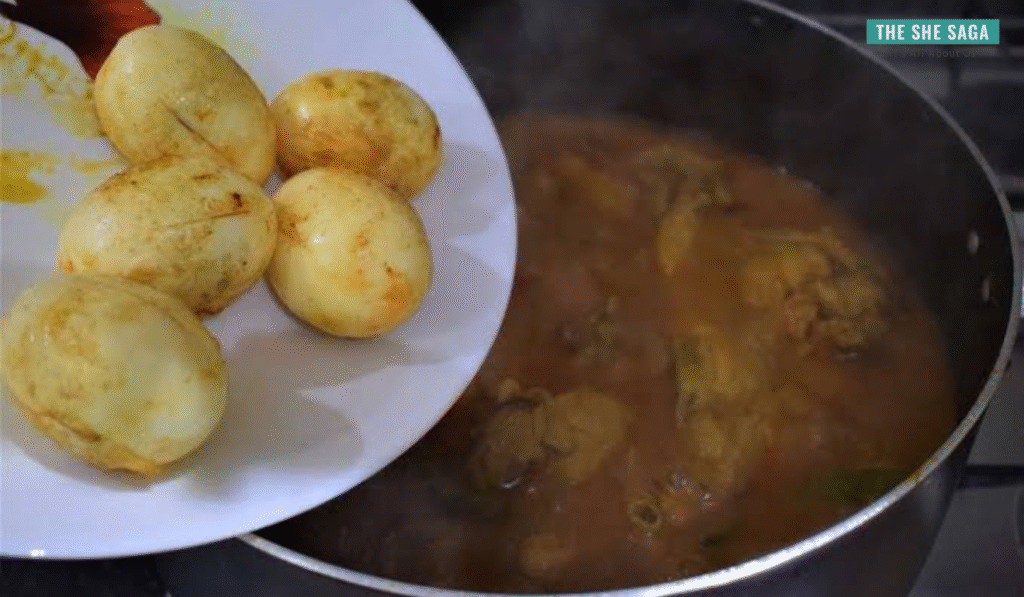
While the recipe is continued to be preserved in Anglo-Indian households, several restaurant chains serving exclusively Bengali cuisine have begun reviving this dish. Names include Bhojohori Manna and Bijoli Grill.
This dish might not draw much attention from food lovers in today’s time, but it carries significance in a way that it is a reminder as to how Indian food began to evolve with time. The Dak Bungalow is prepared like any other regular non-vegetarian curry except that it is cooked with eggs and potato.
A Quick Look at the Recipe Of Dak Bungalow Curry
Ingredients:
- 300 g chicken or mutton (bone-in)
- 4 medium potatoes, halved
- 2 hard-boiled eggs
For the marinade:
- 3 tbsp yogurt
- 1/2 tsp turmeric powder
- 1/2 tsp red chilli powder
- 1/2 tsp cumin powder
- 1/2 tsp coriander powder
- 1 tbsp mustard oil
For the gravy:
- 3-4 tbsp mustard oil
- 1/2 tsp sugar
- 1 large bay leaf
- 2 cinnamon sticks
- 3-4 green cardamoms
- 1 dried red chilli
- 1 medium onion roughly chopped
- 1 heaped tbsp grated ginger and garlic
- 1/2 tsp turmeric powder
- 1/2 tsp red chilli powder
- 1/2 tsp coriander powder
- 1/2 tsp cumin powder
- Salt to taste
- 2 whole green chilies
Cooking Process:
Marinate the chicken with the ingredients listed under marinade. Sprinkle some salt and turmeric on the potatoes and the boiled eggs. Poke some holes in the eggs to avoid spluttering while frying.
Heat mustard oil in a kadhai and fry the potatoes followed by the boiled eggs for 4-5 minutes each. Remove and keep aside; add the whole spices—bay leaf, cinnamon, cardamom, dried red chilli and some sugar. Sugar helps in caramelising the gravy lending it a beautiful colour.
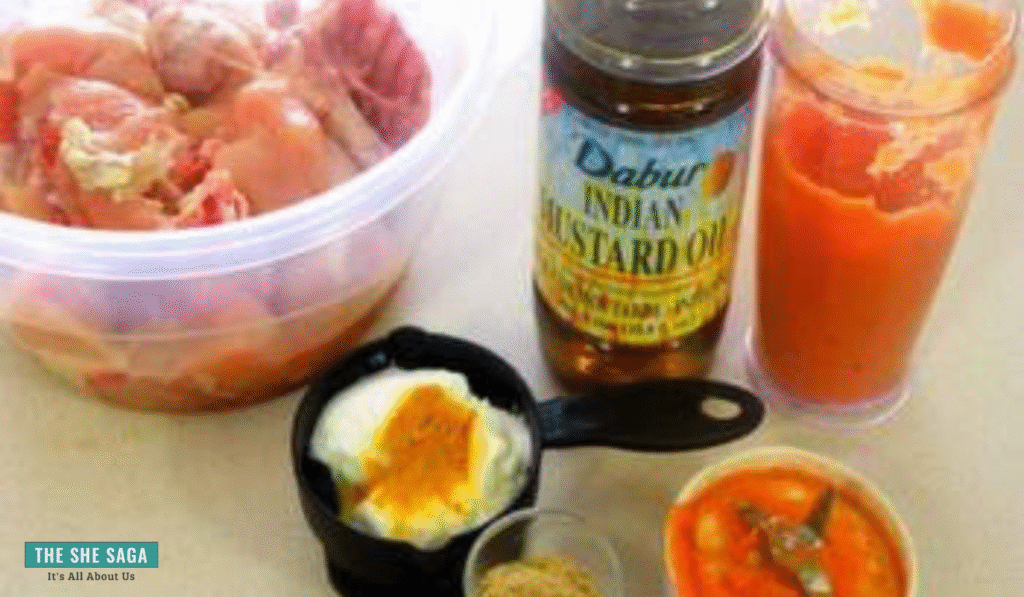
Now add chopped onions, fry until golden brown on medium heat. Throw in the ginger-garlic and mix well until the raw smell disappears.
In a bowl, combine dry spice powders—turmeric, cumin, coriander, red chilli and salt. Mix with little water and add it in the wok. Stir well for 5 minutes on medium heat.
Add the chicken. Mix everything well and cook on medium heat until oil separates. Cover and cook for another 5 minutes on low heat. Now throw in the potatoes, add a cup of warm water and let it come to a boil. After 12-15 minutes add the eggs and whole green chilies; adjust salt/sugar. Cover and cook until chicken is tender.
Garnish with slit green chilies and some freshly-chopped coriander.

By Sampurna Majumdar
Sampurna Majumder is a communications professional born and raised in Kolkata. Fascinated by creativity from a young age, she has a deep love for music, literature, and world cinema. An avid reader and traveler, she holds a Master’s degree in Literature from the University of Delhi.





